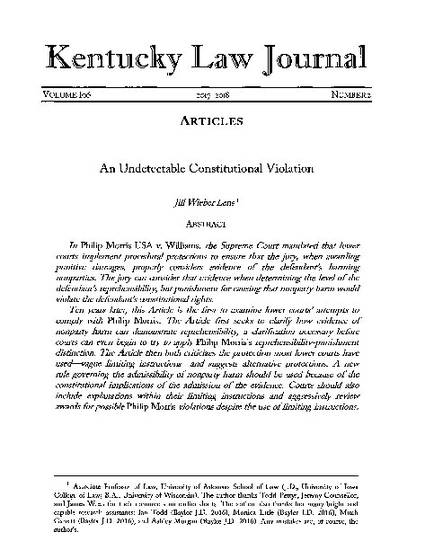
Article
An Undetectable Constitutional Violation
Kentucky Law Journal
(2017)
Abstract
In Philip Morris USA v. Williams, the Supreme Court mandated that lower courts implement procedural protections to ensure that the jury, when awarding punitive damages, properly considers evidence of the defendant’s harming nonparties. The jury can consider that evidence when determining the level of defendant’s reprehensibility, but punishment for causing that nonparty harm would violate the defendant’s constitutional rights.
Ten years later, this Article is the first to examine lower courts’ attempts to comply with Philip Morris. The Article first seeks to clarify how evidence of nonparty harm can demonstrate reprehensibility, a clarification necessary before courts can even begin to try to apply Philip Morris’s reprehensibility-punishment distinction. The Article then both criticizes the protection most lower courts have used—vague limiting instructions—and suggests alternative protections. A new rule governing the admissibility of nonparty harm should be used because of the constitutional implications of the admission of the evidence. Courts should also include explanations within their limiting instructions and aggressively review awards for possible Philip Morris violations despite the use of limiting instructions.
Keywords
- punitive damages,
- nonparty harm,
- jury instructions,
- reprehensibility,
- evidence
Disciplines
Publication Date
July 20, 2017
Citation Information
Jill W Lens. "An Undetectable Constitutional Violation" Kentucky Law Journal Vol. 106 (2017) p. 179 Available at: http://works.bepress.com/jill-lens/2/
